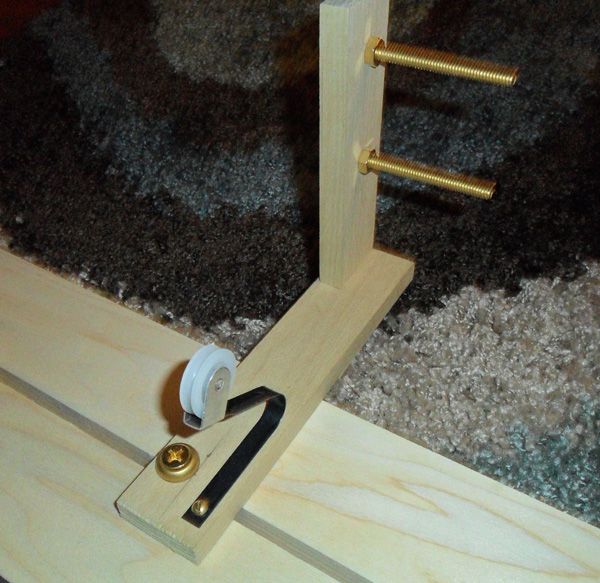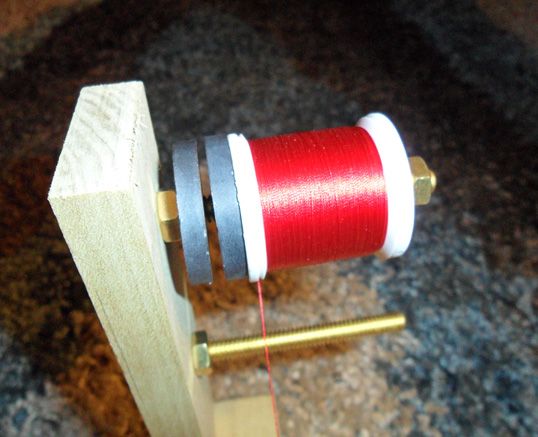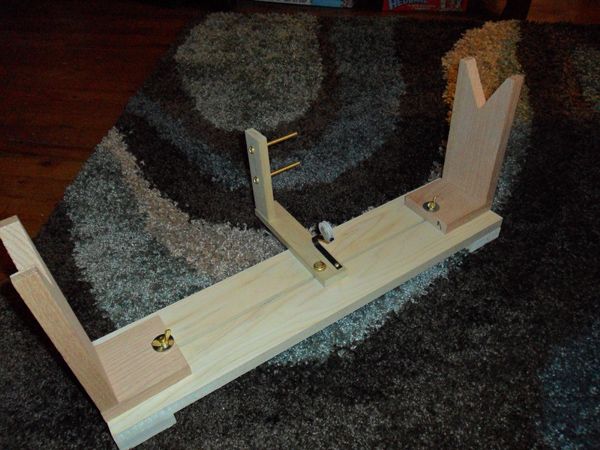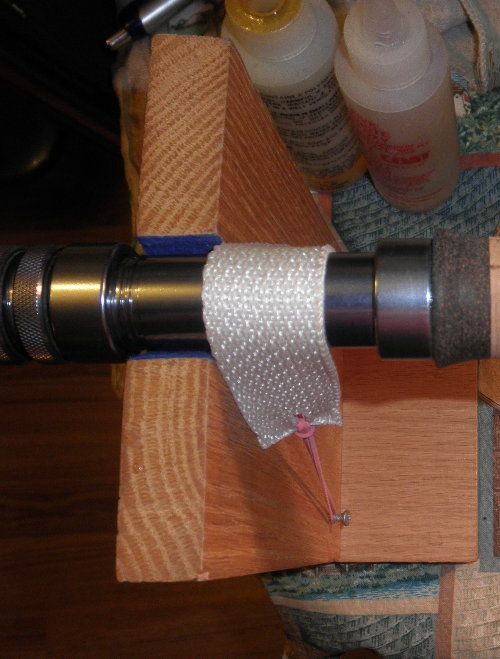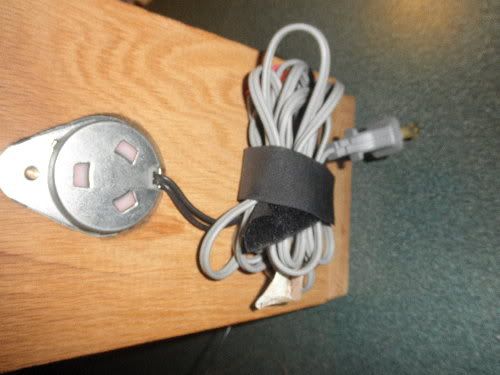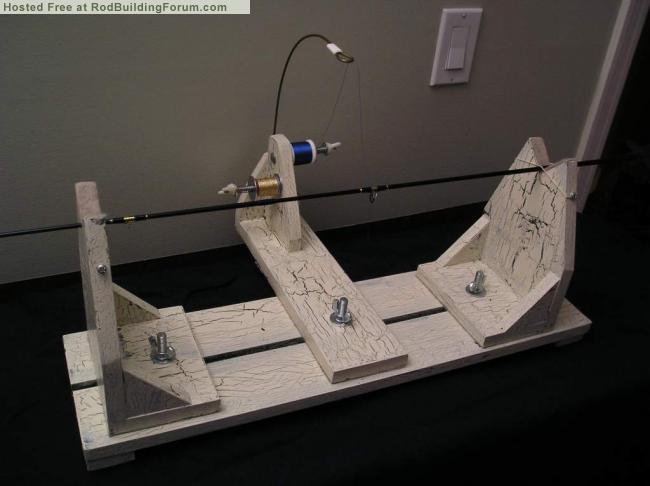For the rod stands just get a couple of feet of 1X6. Drill two holes at the center of the length of the board about an inch apart. Make one 1 1/8" and the other 3/4" Cut the bourd through the center directly between the holes and then again through the middle of the holes. Save everything you cut off. Then cut the ends off 6" from the the cut through the holes. Use the cut off pieces without the holes to make the base and assemble them like this.
Glue a piece of felt in the dip made by your half holes on all four parts with half a hole. The short ones are perfect for some things like keeping it steady while doing the writting. That's why I said don't toss it out.
Take the stand with the big hole and put two scews near the base into it with the head hanging out a good 1/8". Make a strap that hooks over the rod with 1" web strap by burning holes in the ends with a hot nail and add rubber bands.
This takes care of the stand issue for you. Next make a thread tension and turning motor portion with a piece of 1X6 about 18" long. When you go to the lumber yard you will need a total of 3.5'. Cut it at 12" and 8". Put it together as an L @ 90°. Get a piece of dowel or two and drill holes for them so you have a spot for the spool/s to set.

Now at this point, you have a couple options. You can get a thread tension device like I have. I got one off of a busted sewing machine. That is an option and an excuse to go dump shopping. Don't ask. You can get them from some rod building suppliers. Another option is to replace the dowel or blank piece (which I used) with a piece of allthread. Put a felt disc at the bottom and in this order after that. Base-felt pad-thread-felt pad-washer-spring with seperated turns-washer-nut-wing nut. This will give you the tension you need and is very adjustable, but you need to adjust it everytime you change thread. You don't with the tension device. Now in my photo, you see I have a rod tip. That is to maintain tension in the event you need to back up for a crossed thead or something. That strap on the first part is for the same reason, maintaining tension. It never fails that you need a third hand for some things, the phone rings etc, and the strap allows you to walk of and not have stuff come loose and screwed up on you.
In my thread stand, the path the thread makes is from the spool, through the tension device, through an old small spinning guide I have bent the foot so it's flat and then glued in (to keep the thread going flat through the tension device), then last up through the rod tip on onto the rod you are building.
There are a lot of options for a turning motor. Old rotisery motors work good. I got mine from Cabelas. I built it right into the same stand to add weight so the thread stand does not move around while you are working. There are also a lot of options for a chuck. You can buy one, still a lot of options there. You can make one. My first one was a piece of cork on an old arrow shaft I drilled a hole and tapped for a set screw to lock in place on the turning motor shaft. I just use masking tape to hold it to the arbor for turning. In this photo you can see the set screw/arrow shaft thing I mentioned.

The second one I mad was also on a short piece of aluminum arrow shaft with the set screw deal. I made it out of an empty thread spool for heavy sewing thread. It has a tape arbor around the arrow shaft to make it fit, and then four screws to use rubber bands to hold the rod butt in place. You can see that all in the photo of the first tension stand I put in the post. How ever you decide to do the chuck on your turning motor, make shure it is the same height as rod stands so when you turn the rod, you don't have the finish drifting to one end of the rod.
I added a velcro strap deal to keep the electrical cord out of the way.
In the one photo of the tension stand, you notice there is two rod tips. One short and at a much lower angle. That one is for doing weaves, in case you were curious as to what it was for. It puts the angle of the thread going onto the blank much lower. I can do my laft list easier if I have a top of the work clear.
This was all pretty much home made. It was not expensive and I have never really thought about upgrading as it works just fine. I even made a second set. In fact, I thought about getting a power wrapper for a bit. I was worried I would not be able to get the quality of wraps though. I went to Montana and visited the R. L. Winston factory. They told me that they bought power wrappers for everyone, and it didn't take two weeks for them to go back to doing it by hand. That was the end of my desire to upgrade.

